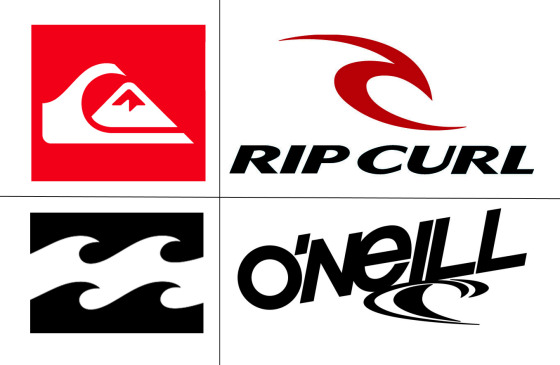The surf industry is worth $20 billion. Four companies control more than 75 percent of the world market. Footwear, clothing, accessories, and apparel are the major source of revenue, while gear and surfboards only stand in a discrete place in the sales ranking.
There are hundreds of surf brands, but only Quiksilver (Huntington Beach, California), Rip Curl (Victoria, Australia), Billabong (Queensland, Australia), and O'Neill (San Francisco, California) are really dominating the future lifestyle trends.
Interestingly, that's two US and two Australian surf brands. It is also very curious to look at their logos. As you might have noticed, these four emblems communicate several official logos.
Colored, classic, girlish, boyish, smooth, and gnarly. Surf logos are constantly being adapted to each situation. You could call them alternative logos to the official ones.
The original logos displayed on the official websites of Quiksilver, Rip Curl, Billabong, and O'Neill have several similarities and differences between them. If you look carefully, there are three main colors in use: red, black, and white.
Quiksilver and Rip Curl prefer red in their sign, while black is the color chosen by Billabong and O'Neill. This means there's no national preference.
The red color is easily captured by the human eye and has a strong connection and association with the sun, blood, courage, and sacrifice. On the other side, black can be authoritarian, religious, stylish, and powerful.
One thing is common to all surf brands. Have you found out? Exactly, the correct answer is the wave.
Quiksilver, Rip Curl, Billabong, and O'Neill share a wave in their graphic mark, but the Huntington Beach marketing team also added a mountain for their snow fans.
Logos leave a mark on consumers. Next time you're upgrading your surf gear, take a look at the brands in your local surf shop and try to capture what they are exactly trying to tell you.
By the way, take a look at the timeless and iconic surf brands. Also, discover the most famous surf company logos.
